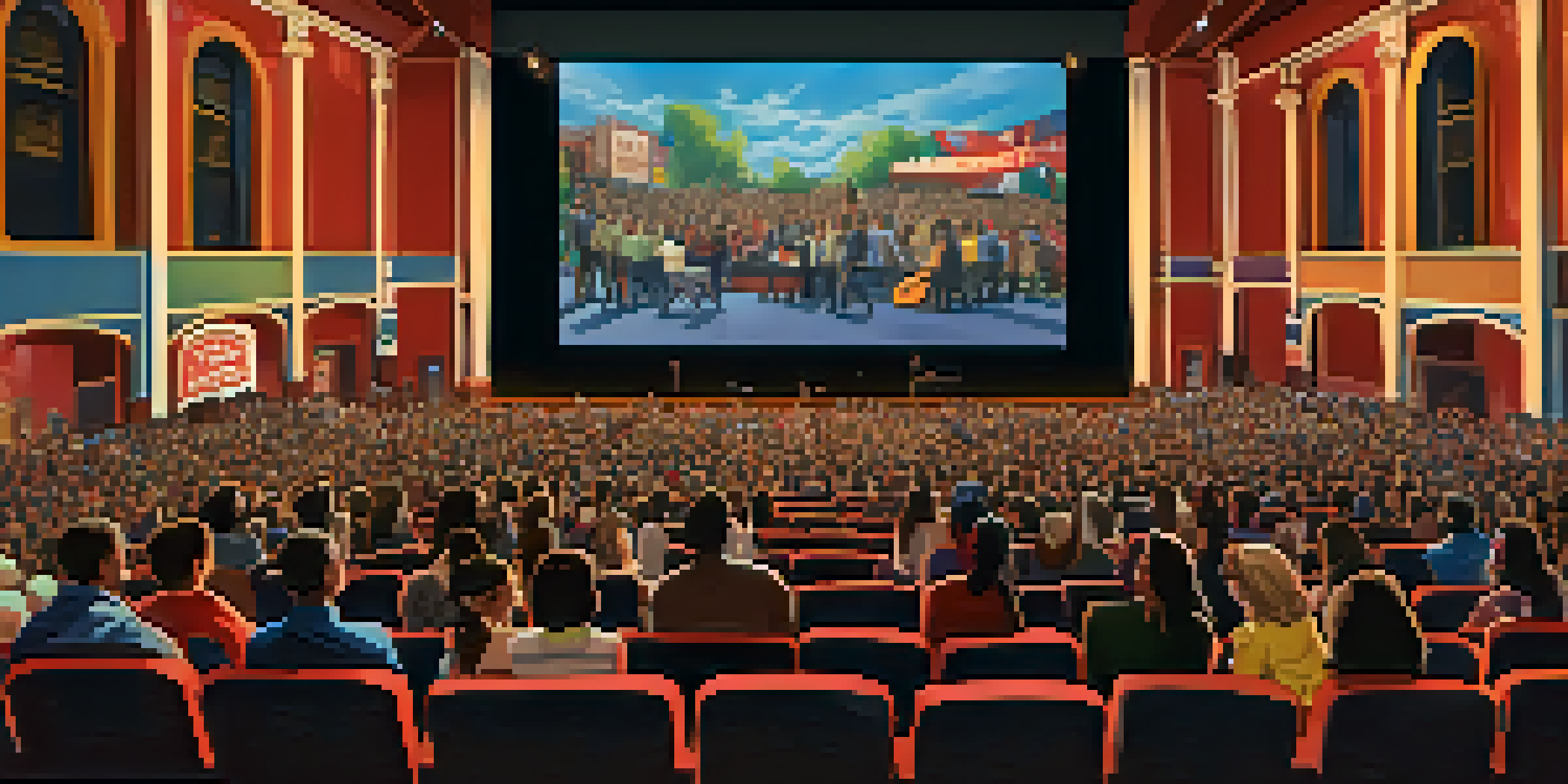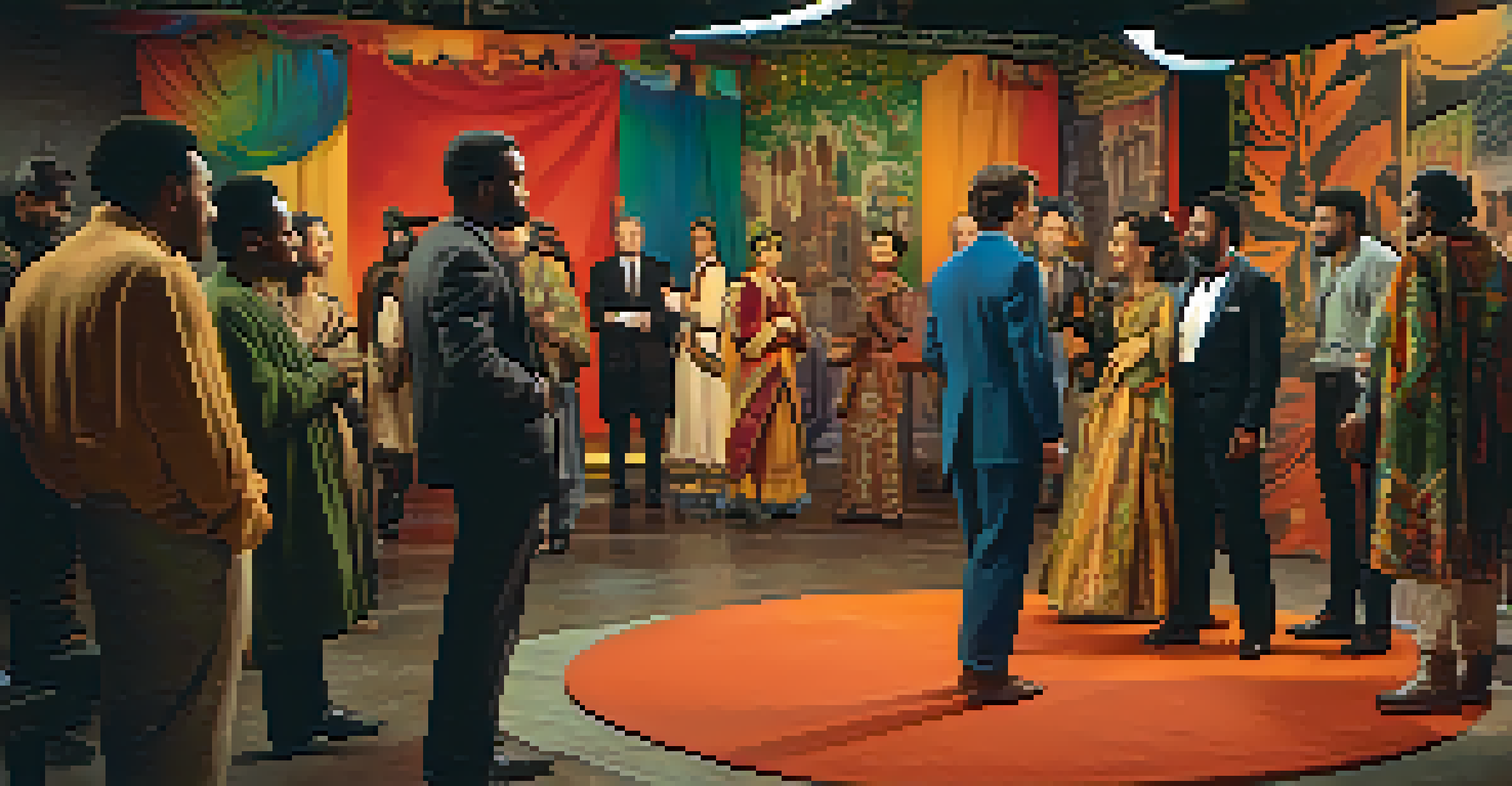Diversity in Hollywood: Trends Shaping Inclusive Storytelling

The Importance of Diversity in Film and TV
Diversity in Hollywood is not just a trend; it's a necessity. By representing a variety of voices and experiences, filmmakers can create stories that resonate with a broader audience. This inclusion allows for richer narratives and more relatable characters, ultimately enhancing the viewing experience.
Diversity is not a reason for a story; diversity is the story.
When viewers see themselves reflected in the stories being told, it fosters a sense of belonging and validation. For example, films like 'Black Panther' and 'Crazy Rich Asians' have not only celebrated cultural diversity but also achieved tremendous box office success. This shows that inclusive storytelling can be both impactful and profitable.
Moreover, diversity in storytelling encourages empathy and understanding among viewers. By showcasing different perspectives, Hollywood can help bridge cultural divides and promote a more harmonious society. In this way, diversity becomes a powerful tool for social change.
Trends in Diverse Casting Choices
One of the most notable trends in Hollywood is the shift toward diverse casting. Gone are the days when lead roles were predominantly given to white actors; now, we're seeing a more representative mix of talent. This shift not only reflects societal changes but also responds to audience demand for authenticity.

For instance, shows like 'Orange Is the New Black' and 'Pose' have cast actors from varied backgrounds, bringing unique stories to the forefront. This trend has helped to break stereotypes and challenge the traditional norms of casting, allowing for more nuanced portrayals of characters.
Diversity Enhances Storytelling
Inclusive narratives resonate with wider audiences, creating richer experiences and fostering a sense of belonging.
Additionally, diverse casting extends beyond race and ethnicity. It encompasses gender, sexual orientation, and ability, leading to a richer tapestry of storytelling. By embracing this broader definition of diversity, Hollywood is setting the stage for a more inclusive industry.
Impact of Streaming Services on Diversity
The rise of streaming services like Netflix and Amazon Prime has revolutionized how we consume media, and it's also influencing diversity in storytelling. These platforms are more willing to take risks on unique narratives that traditional studios might shy away from. As a result, we're seeing a wealth of diverse content that speaks to underrepresented communities.
The future of cinema is not just about the stories we tell, but the voices we hear.
For example, Netflix's 'The Half of It' offers a fresh take on coming-of-age stories, centering on an Asian-American female lead. By providing a platform for these diverse stories, streaming services are expanding the definition of mainstream entertainment.
Moreover, the global reach of streaming services allows for a wider array of cultural narratives to be shared. International films and shows are gaining traction in the U.S., enriching the overall cinematic landscape and giving voice to stories from around the world.
The Role of Filmmakers and Writers in Driving Change
Filmmakers and writers play a crucial role in promoting diversity in Hollywood. By championing diverse stories, they can challenge the status quo and push for more inclusive practices within the industry. Their experiences and perspectives are vital in shaping narratives that resonate with a wide audience.
Take Ava DuVernay, for instance; her commitment to telling stories that reflect the Black experience has opened doors for many. By advocating for diversity behind the camera, she sets an example for emerging filmmakers to follow.
Streaming Platforms Drive Change
The rise of streaming services is allowing for more diverse stories to reach audiences, reflecting a broader range of cultural narratives.
Additionally, writers from diverse backgrounds bring their unique perspectives to the table, enriching the storytelling process. Their input helps to create authentic characters and plots that reflect the complexities of real life, making stories more relatable and impactful.
Audience Demand for Inclusive Content
The demand for inclusive content is growing, and audiences are vocal about their preferences. Viewers are increasingly seeking out films and shows that reflect their diverse experiences and cultures. This shift in consumer behavior is compelling Hollywood to adapt and embrace more inclusive storytelling.
Social media has amplified this demand, with audiences using platforms like Twitter and Instagram to express their support for diversity in entertainment. Movements like #OscarsSoWhite have raised awareness about the lack of representation and have prompted industry stakeholders to take action.
As a result, studios are recognizing that inclusive content is not just a moral obligation; it's a business strategy. By catering to diverse audiences, they can tap into new markets and create loyal fan bases, ultimately driving profitability.
Challenges Still Facing Diverse Storytelling
Despite the progress made, challenges remain in achieving true diversity in Hollywood. Issues like typecasting and tokenism still persist, where characters from diverse backgrounds are often reduced to stereotypes. This undermines the authenticity of storytelling and limits the potential for deeper character development.
Additionally, many filmmakers from underrepresented backgrounds still struggle to secure funding and support for their projects. This lack of access can hinder the creation of diverse narratives, perpetuating a cycle of exclusion in the industry.
Audience Demand for Representation
Growing audience demand for inclusive content is prompting Hollywood to adapt and embrace diverse storytelling as a business strategy.
Addressing these challenges requires a collective effort from all industry stakeholders. By prioritizing diversity in hiring practices and funding decisions, Hollywood can pave the way for a more inclusive storytelling landscape.
The Future of Diversity in Hollywood
The future of diversity in Hollywood looks promising, with a growing commitment to inclusion at all levels of the industry. As more diverse voices enter the conversation, we can expect to see a broader range of stories that reflect the complexities of modern society. This shift not only enriches the narratives we consume but also empowers marginalized communities.
Moreover, initiatives like diversity training and mentorship programs are being implemented to support underrepresented talents. By investing in the next generation of storytellers, Hollywood can ensure a steady flow of innovative and diverse content for years to come.

Ultimately, the continued push for diversity will shape not just the stories told but also the culture surrounding them. As audiences demand authenticity and representation, Hollywood will need to adapt, leading to a more inclusive future for storytelling.